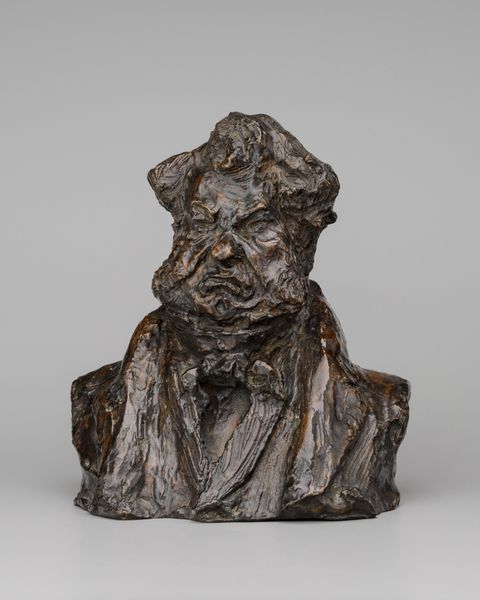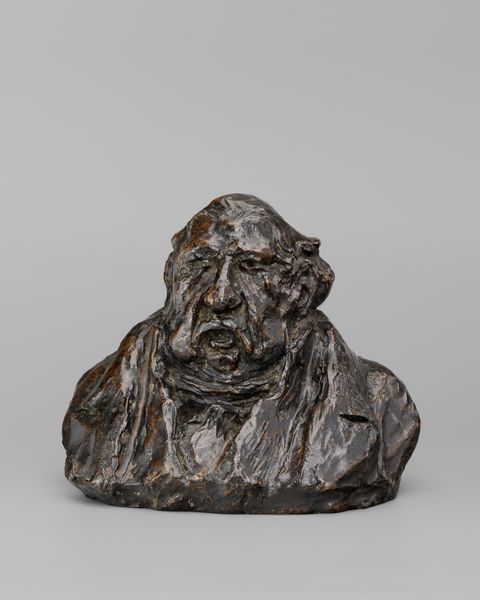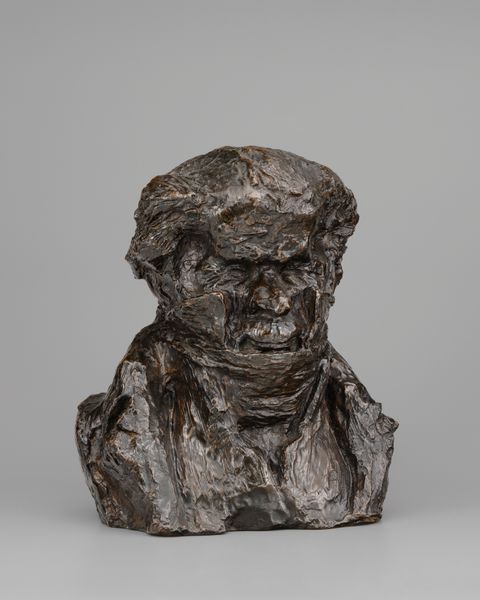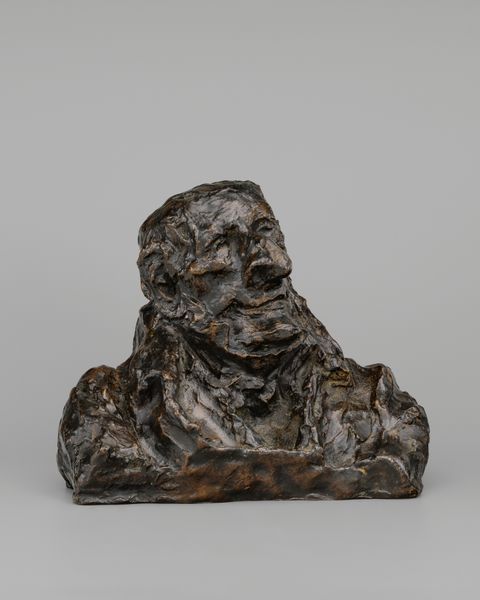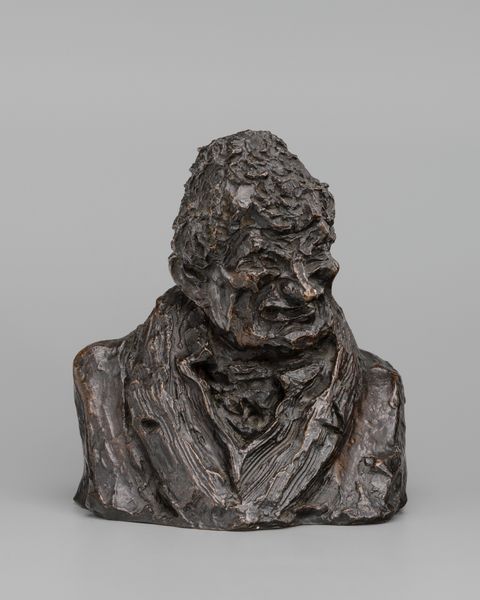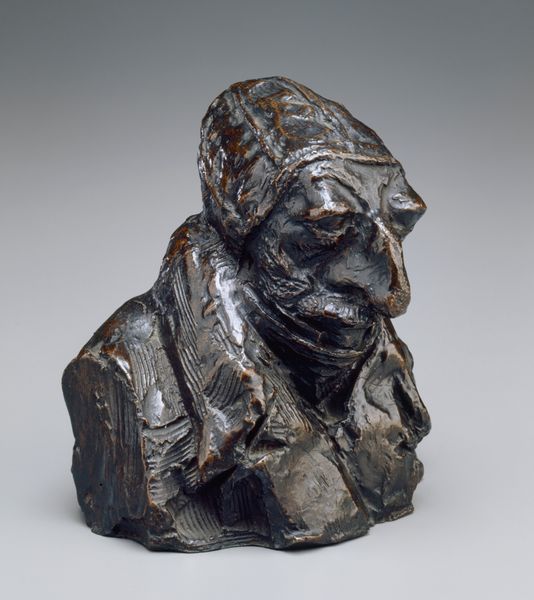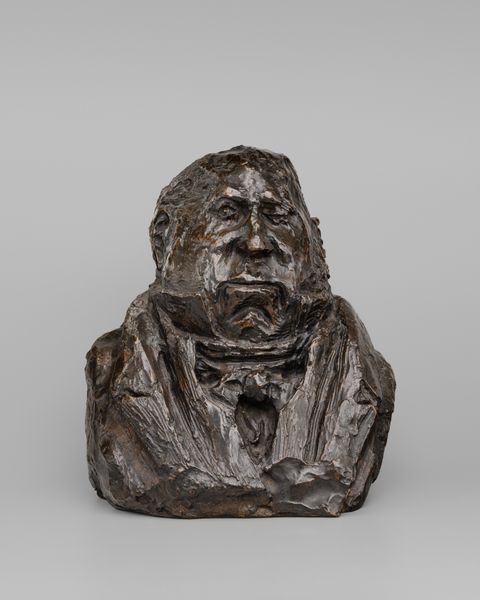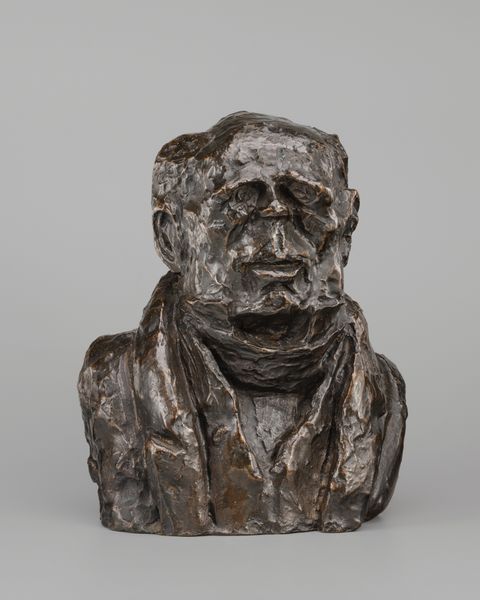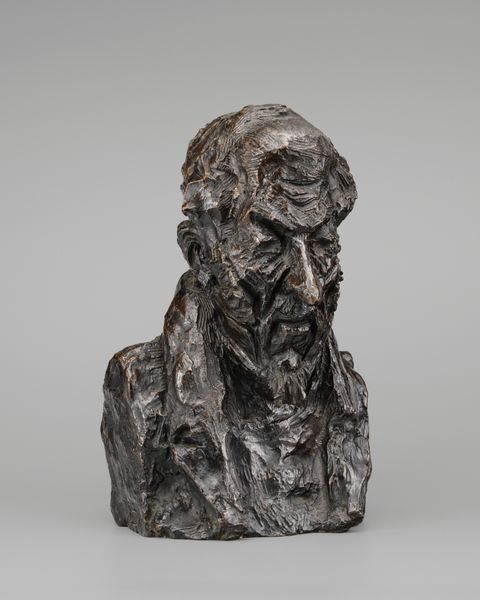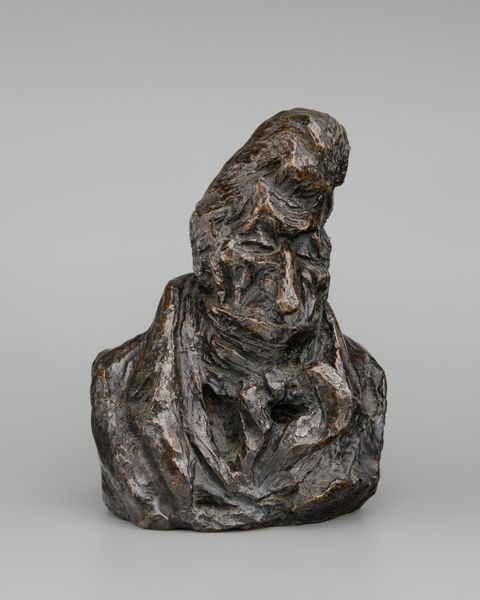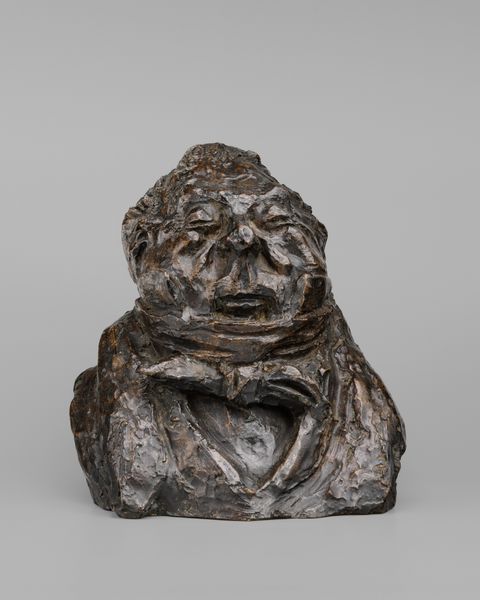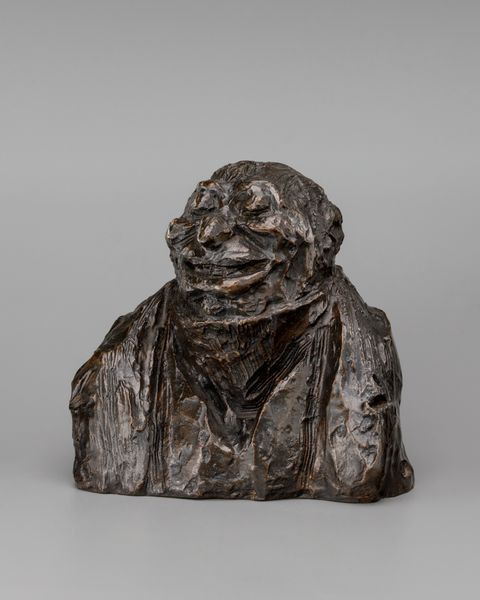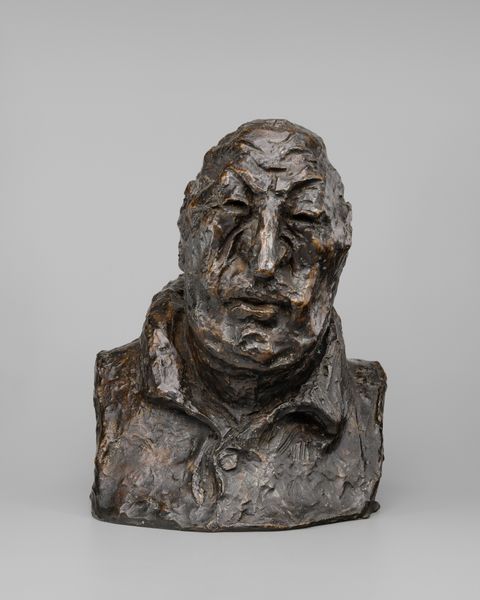
bronze, sculpture
#
portrait
#
sculpture
#
bronze
#
sculpture
#
history-painting
#
realism
Dimensions: overall: 17.2 x 15.9 x 13 cm (6 3/4 x 6 1/4 x 5 1/8 in.)
Copyright: National Gallery of Art: CC0 1.0
This is Honoré Daumier's bronze sculpture, Claude Bailliot. Made in France in the 19th century, it's part of a series of portrait-charges of French parliamentarians. Daumier originally modeled these in clay before they were cast in bronze. He was employed at the time as a printmaker for a satirical newspaper. His job was to critique the political life of France under the July Monarchy and the Second Republic. His sculptures of parliamentarians should be understood in this context. They’re not straightforward portraits, but caricatures intended to mock their subjects. Daumier exaggerates Bailliot’s features, particularly his nose and brow, to convey a sense of arrogance and self-importance. Art historians use sources like newspapers, political pamphlets, and other visual imagery to better understand the meaning and impact of works like this. We can understand art as a response to specific political and social circumstances.
Comments
No comments
Be the first to comment and join the conversation on the ultimate creative platform.
